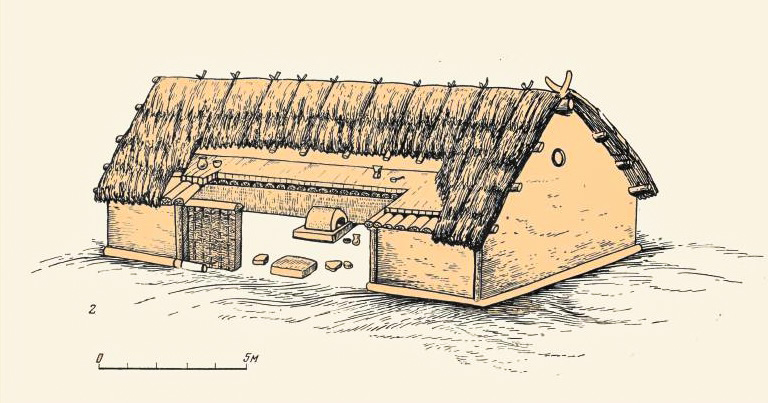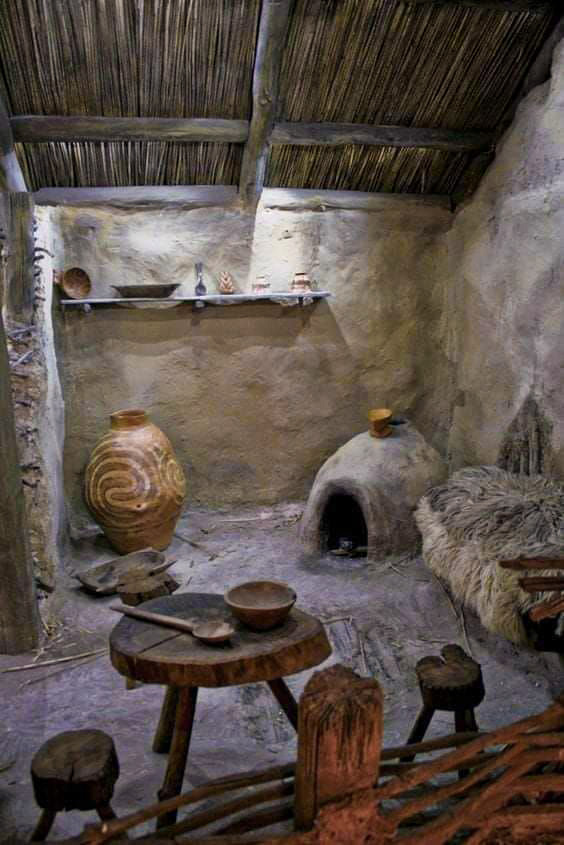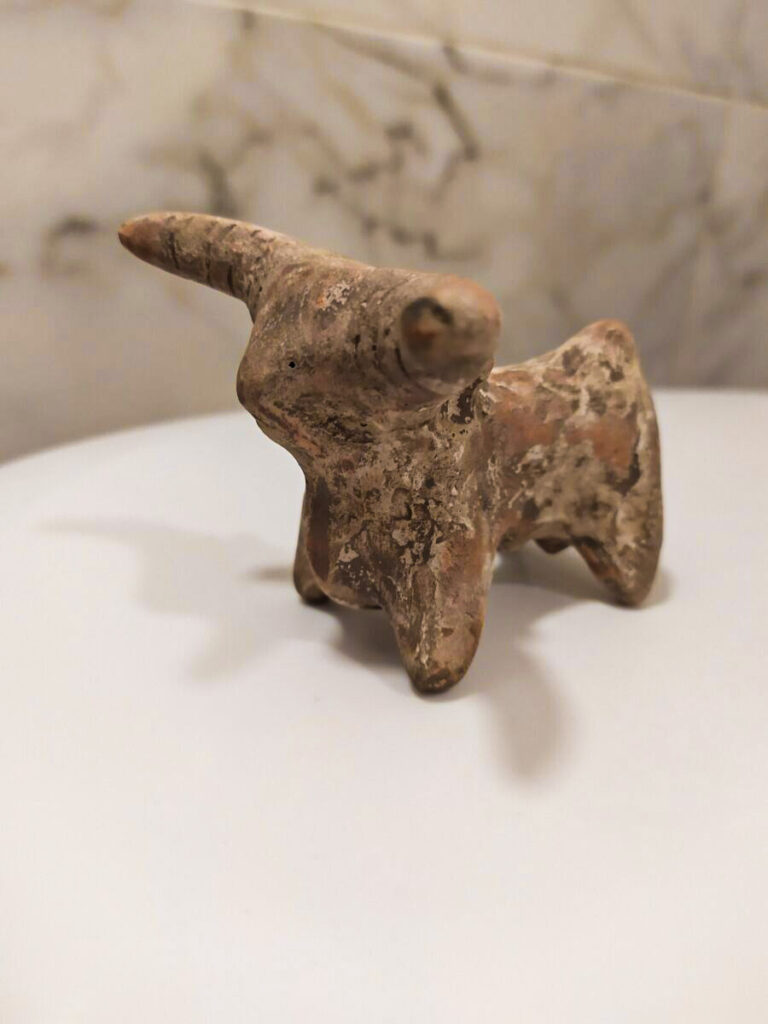Did you know that a very long time ago, thousands and thousands of years ago, in the Stone Age, when Greek gods were not yet invented, Egyptian pyramids weren’t built, and even China and Mesopotamia did not exist, people in our Moldova were building cities?
Incredible, yes. But it’s a fact. The Cucuteni-Trypillia culture was one of the first civilizations in Europe, predating the earliest settlements in Mesopotamia and Egypt by several centuries. Its name comes from the places where its traces were first found: Cucuteni (a village near Iași, Romania) and Trypillia (a settlement in Ukraine).

Excavations revealed that this ancient culture emerged around 5250 BCE and lasted until approximately 2750 BCE.
The Cucuteni civilization was proto-urban — its settlements or “cities” were quite large (ranging from several dozen hectares to 200–450 hectares in some cases).
Housing
Long before the legendary Sumerians and Babylonians, the Cucuteni people were the first to construct gigantic settlements surrounded by embankments, with streets and central squares in the middle – true “proto-cities” and “proto-fortresses”. It is truly astonishing, suggesting that 7,000 years ago in Moldova, there wasn’t just an archaeological culture but an advanced civilization.
Sometimes they fortified their settlements with earthen walls and moats to defend against enemies. These settlements were quite populous — up to 20,000 inhabitants — and covered an area of 400 hectares, making them very large for their time.
Certain areas of the Cucuteni-Trypillia culture, with estimated populations of around 15,000 or more and spanning 400 hectares, were notably large for their era.
Remnants of houses found by archaeologists, as well as their clay models, allow us to reconstruct the appearance of Trypillian houses. Typically, these were one- or two-story rectangular houses. Walls were constructed from woven reeds, plastered with clay. There’s evidence to suggest that members of this culture sometimes decorated the exterior of their homes with patterns similar to those found on clay pottery.
Roofs were gabled, covered with straw or reed bundles. Windows were small and round. Each house had a furnace, next to which there was a clay bench. Wooden furniture was also made: chairs, tables, and backrest chairs. House floors were made of clay. Houses were equipped with hearths used for heating and cooking.
In 2012, archaeologists uncovered a public building measuring 1,200 square meters! At that time, it was the largest structure on the European continent.
Cult of Fire
Researchers found a unique, rather strange ritual in the Cucuteni-Trypillia culture. These people routinely burned their settlements after a certain period. It was long believed that this was due to enemy raids.

Then archaeologists unexpectedly discovered that the Trypillians did this deliberately, burning settlements in a 60–80-year cycle, once the land around the settlement became infertile. They then moved to new lands.
Occupations of the Trypillians
The main occupations of the Trypillians were agriculture and livestock farming. They cultivated wheat, barley, oats, and peas. Land was tilled using wooden hoes with stone or horn tips. For harvesting, they used bone or stone sickles. In stone mills, they ground grain into flour.
The Trypillians bred cows, oxen, sheep, goats, pigs, and horses. They also hunted and fished. It’s believed that the Trypillians stayed in one place for 50-70 years until the land became exhausted.
To date, the most famous works are those of Trypillian potters. This includes diverse pottery: pots, pans, bowls, vases, mugs, clay barrels for grain. The Trypillians invented two-level pottery kilns for firing items. They painted their pottery with black, yellow, red, and sometimes white paints, decorating them with special ornaments, sometimes incorporating symbolic images of humans, animals, birds, trees, or wheat ears.
In addition to farming and livestock, people knew metallurgy, weaving, and pottery. They mastered the technique of extracting and processing copper, from which they made knives, awls, needles, and later sickles, axes, daggers, and jewelry (beads, pendants, bracelets, etc.).
People of that time made various tools from flint, stone, bone, clay, shells, and copper. These were sickles, drills, scrapers, prods, hoes, and so on. Likely, the most important discovery was the wheel. In this respect, the people of the Trypillian era were ahead of many other cultures. Some historians believe that the people of the Trypillian culture used domesticated animals, especially oxen, to tow heavy plows and the like.
Yin-Yang, and Swastika
It was previously believed that the symbols of Yin-Yang and Swastika first appeared in the Chinese cultures of Yangshao and Majiayao around 4-3 thousand years BCE. However, in reality, the symbols of Yin and Yang were found in the ancient model of the Trypillian temple a thousand years before the emergence of ancient Chinese civilization.
It’s interesting to note that the painted pottery of Majiayao and Yangshao closely resembles the pottery of the Trypillian culture, which was located in the territories of Moldova, Ukraine, and Romania. Notably, it was in Trypillia that symbols like the Swastika and Yin-Yang first appeared, which later emerged in China.
Cult of the Great Mother Goddess
Being farmers, representatives of the Cucuteni culture worshiped deities represented by female clay statuettes — symbols of abundance and fertility.
There were also figures of bulls with large horns, symbolizing the Sun God. The Cucutenians worshipped these gods, performing magical and religious rituals at altars.
Cult of the Progenitor
On a vessel from the village of Petreni (Moldova), there is a depiction of an unusual three-tiered giant next to celestial streamlines and Suns on both sides.
Such three-fingered beings are widely found on other Trypillian vessels and, interestingly, in India, in the decoration of household walls.
Cult of the Bull
The symbol of the bull is inseparably linked with the woman among the Trypillians. Bull heads are a dominant motif, symbolically conveying the idea of regeneration.
A bone figure in the shape of a bull’s head with geometric patterns embodies the woman.

Thousands of years later, the symbol of Moldova became a bull’s head. Is it a coincidence?
Why did the Trypillians disappear?
As archaeological data suggests, in the 3rd millennium BCE, the Trypillian culture underwent a sudden decline: settlements were abandoned or devastated, and people partly migrated to other territories. The remaining population primarily engaged in animal husbandry. Their homes were small, typically semi-subterranean. The pottery that archaeologists find is simpler and of inferior quality.
So why did their culture decline? The most common theory suggests that the Trypillians exhausted the soil with their agriculture, leading to reduced crops. There were no suitable lands for farming, the climate became colder, and droughts became more frequent. It’s assumed that the Trypillians merged with other nations and tribes of that world.
When I learned about this amazing history of proto-Moldova, I realized I should reflect this culture in one of the bath complexes of the Voloshin Baths and will be telling everyone about it. Now, you too can share with others and take pride in the fascinating history of our land.



























